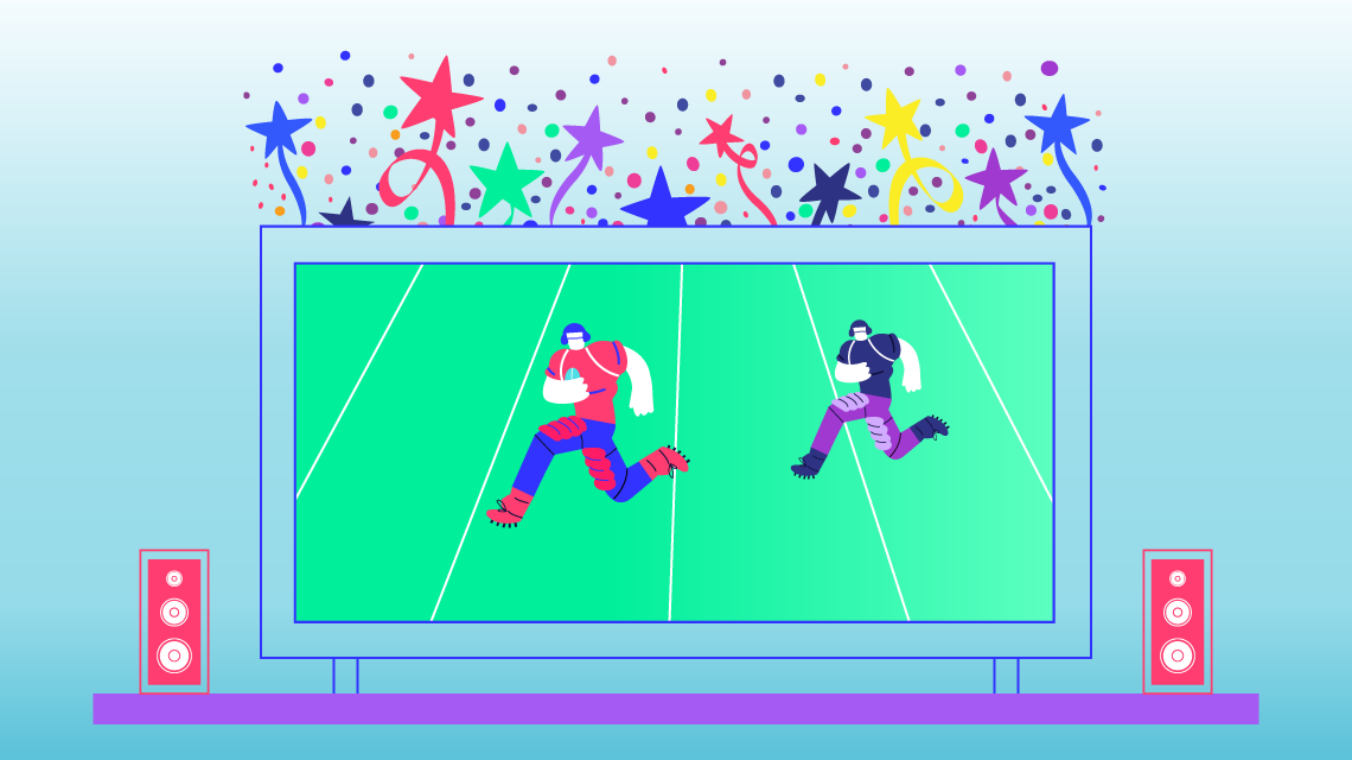More than 100 million people tuned in to watch Super Bowl LIII. But only 25% of the viewers actually watched the game. The other 75% came to watch the ads (can we blame them?). Why are ads celebrated on Super Bowl Sunday when they are seen as a nuisance every other day? In part, it’s because Super Bowl ads are more focused on entertainment and less on sales.
But what else creates that magical, memorable edge? Let’s take a closer look at some of the best Super Bowl ads. Here are some ways they differ from everyday ads also produced by these brands. By incorporating these strategies into your digital campaigns, your brand can achieve Super Bowl impact throughout the year.
1. Microsoft
Winner
https://www.youtube.com/watch?v=CM2QJO2IDFo
Microsoft shared the stories of Sean, Taylor, and Owen, focusing on how inclusion can be attained through technology. Microsoft added a human element to their technology. The ad pulls hard on our heartstrings when Owen’s father speaks up about Owen’s rare genetic disorder, Escobar Syndrome, and how Microsoft’s adaptive controller helps Owen interact with his friends. Microsoft ends the ad with the line, “When everybody plays, we all win”.
Why was this element of inclusion particularly memorable? Because humans are social, relationship-driven creatures. Microsoft acknowledged the innate desire to belong while masterfully attaching a sense of community to their product–something that is hard to do amiss fears of robots taking over the world.
Loser

This is a fine ad, but also a boring one. The average person is exposed to upwards of 10,000 ads every single day. In order for an ad to stand out in our saturated market, there needs to be an oomph factor. An oomph factor can be adding animations or an interactive element paired with personalized targeted messages. User data, such as gender, age, and location, can be worked into your strategy for maximum impact.
2. Bud Light
Winner
The first “Dilly Dilly” ad from Bud Light appeared in August of 2017. Since then, “Dilly Dilly” has become a viral sensation, amassing over 3.3 million views on YouTube. Bud Light created a widely popular advertising campaign by putting their own humorous spin on pop-culture phenomenon, Game of Thrones, arguably the worlds’ most popular television series. The beer brand masterfully created a 3-part saga that stayed consistent with their light-hearted, comical messaging… until the M Night Shyamalan-esque bombshell thrown in at the very end of their third commercial.
The Bud Knight is (presumably) killed by Game of Thrones character, Ser Gregor Clegane, as dragons descend from the sky, breathing fire and causing mass mayhem and destruction. This twist was something no one saw coming, making audiences everywhere stop talking and pay attention to their screens. The final few moments promoted Game of Thrones, not bud light, adding another twist to a brief, 90-second commercial. These risks went against their brand in such a shocking way that they made a lasting impression.
Loser

When Bud Light launched in the UK, they released this advertising campaign. It’s pretty unclear what their objective is here. Bud Light’s tongue-in-cheek humor, which has been a strong historical presence throughout their marketing, went a bit too far in this advertising campaign. Bud Light attempted to play with negative American stereotypes in a sarcastic way. However, this campaign had a much different effect. Instead of getting a chuckle, Bud Light created a brand image that is synonymous with insensitivity. Consumers align themselves with brands that reflect their values, and most people who want to be branded as careless.
3. Bumble
Winner
https://www.youtube.com/watch?v=PQcXpoWIwxo
Staying consistent with their brand identity, Bumble promoted female empowerment by following Serena Williams’ path from childhood to world-renown stardom. This ad follows Serena on and off the court. Not only highlighting Serena’s impressive tennis skills, but also her work as an entrepreneur, wife, mother, and friend. She’s both relatable and inspirational to any woman.
This ad isn’t successful just because Bumble used Serena as their spokesperson, this ad is successful because it presents a rich backstory of a compelling character. In short, Bumble crafted a good story. Why is that so important? Because 92% of consumers want a story in their advertising.
Winner

Bumble also brought their A-game to digital advertising. Bumble incorporated racial diversity, an interesting color pallet, and dynamic elements. The models’ Bumble used for their banner ad vary in several demographics, allowing everyone to feel a connection to their product. The models were also placed against a vibrant, attention-grabbing color scheme with animations.
What did all the winning ads have in common?
All of the successful ads shown here were able to elicit an emotional response and weave that sentiment into storytelling. 90% of our purchasing decisions are influenced by emotions. So, It’s very critical to engage with buyers online.
What did the losing ads lack?
The losing ads were either unmemorable (Microsoft) or memorable (Bud Light) to a fault. Advertising is more than a clever punchline, it’s represents a brand’s persona and values. Consumers may have high expectations for these, but eliciting a positive response can often be accomplished through attractive designs, inclusivity, and storytelling in an ad.

